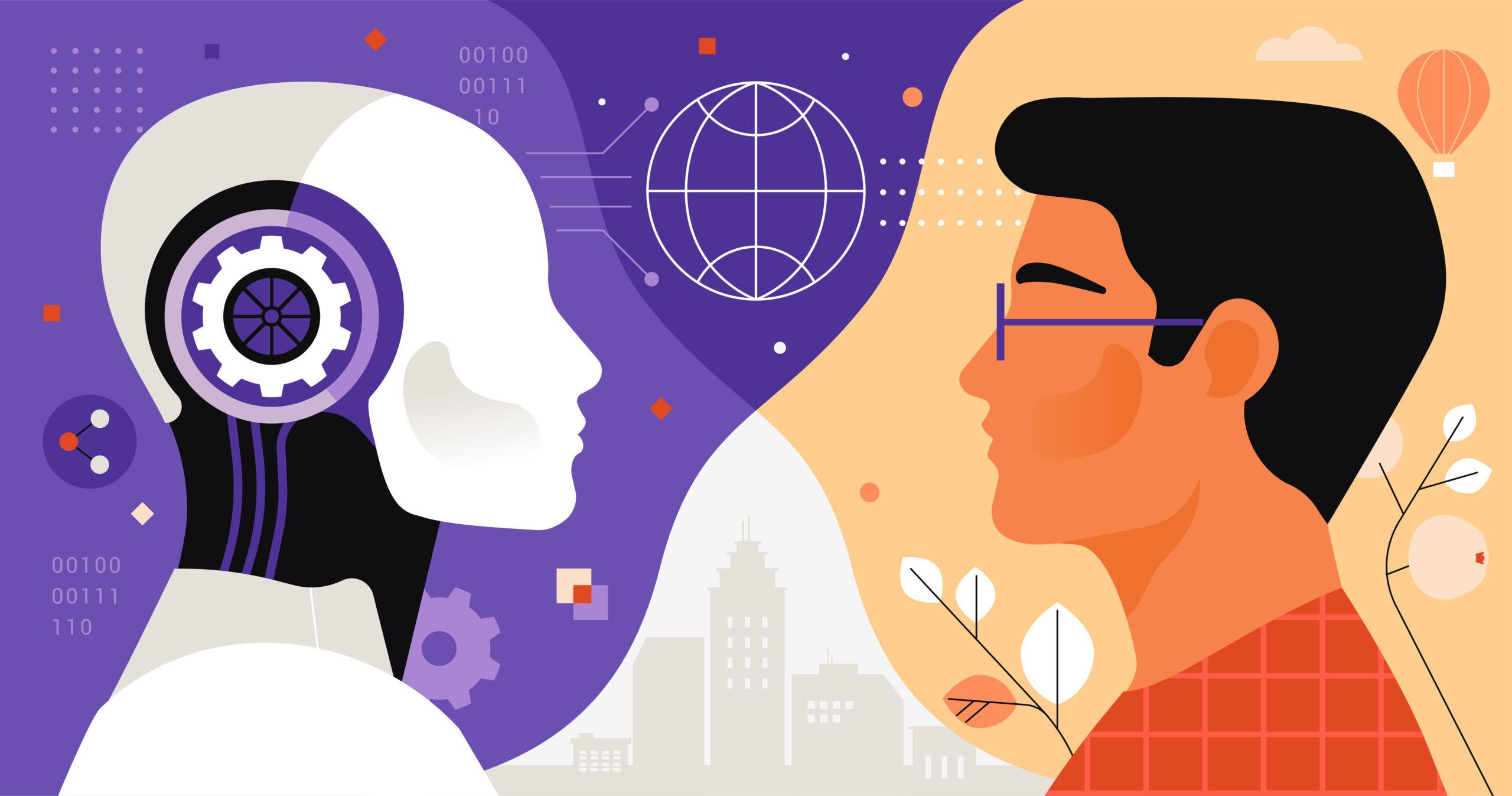
Engineering leadership | Blog Post
AI Upskilling: How Software Developers Stay Competitive
Laura Berlinsky-Schine
Share this post
Just one in 10 people leaders say they have AI skills, despite also believing skills-based hiring is more beneficial than education or career background, a Salesforce digital skills survey finds.
We know how important artificial intelligence is for most workers. Yet many individuals lack these fundamental competencies necessary for advancing in their careers.
AI upskilling is essential across industries—perhaps no more so than software development. These are the very people who build and refine the models we use every day, from generative AI platforms like ChatGPT to voice assistants like Amazon’s Alexa. Not only is it critical for developers to understand the basics of building software that utilizes AI, but it’s also important for them to know the tools that will help them in their day-to-day work.
Why AI Upskilling Is Essential for Developers
Nearly one-quarter of workers fear that their jobs may become obsolete, according to a 2024 Gallup poll. That’s up from 15% in 2021.
Rather than burying your head in the sand, embrace AI as a partner. AI upskilling means learning how to leverage AI to keep pace with a rapidly changing skills landscape. It’s essential for keeping up with an ever-evolving job landscape.
Technology does have the power to displace workers—but only if workers and employers fail to recognize that AI can be used to accelerate, improve, and change the nature of many occupations.
This is especially true of the sector that creates and augments technology itself: software development. In order to keep pace with AI’s unprecedented “rise,” developers must embrace AI tools and understand the technology itself.
AI Copilots as Learning Resources for Developers
AI copilots offer developers help and feedback in real-time. They automate repetitive tasks, make suggestions, troubleshoot issues, and even assist with writing code. These tools accelerate the learning and adoption of new skills. They also assist developers with refining and augmenting their competencies, offering real-time feedback.
Some examples of popular AI copilots for developers are:
- GitHub Copilot: This AI coding assistant helps you accelerate coding efforts. You can get suggestions while you type in your IDE, ask for assistance using the command line, and chat with the tool in real-time.
- Tabnine: Tabnine assists developers with planning, creating, testing, troubleshooting, and documenting code, all while keeping the code secure, private, and compliant. The tool even explains legacy code or code that’s been written in an unfamiliar language.
- Cursor: An AI-powered code editor, Cursor aims to “blur the line between human creativity and artificial intelligence.” This tool combines a traditional code editor with advanced AI, offering features like smart code complete and context-aware chat.
These and related tools offer personalized learning platforms geared toward individual skill levels, skills reinforcement, automated code reviews, intelligent code assistance, automated documentation, and more.
Key AI Skills for Developers to Learn
AI is an enormously complex topic, spanning numerous niches and subcategories. Some of the most important subtopics software developers should understand include machine learning fundamentals, natural language processing, data management, AI ethics, and risk management.
Machine Learning
Netflix’s recommendation system, Facebook’s image recognition tagging tool, and Visa’s fraud detection mechanisms are all powered by machine learning. Often confused with AI itself, ML is a subset of artificial intelligence that leverages supervised learning, neural networks, and model training and tuning.
Machine learning is an essential concept in AI, enabling developers to create intelligent applications. Using tools, frameworks, and resources like TensorFlow and scikit-learn, developers can build a solid foundation in ML.
Natural Language Processing (NLP)
NLP is the power behind virtual assistants and AI chatbots. Enabling the automation of sentiment analysis, content moderation, and document classification, it facilitates the creation of apps that understand and respond to human language. That means a more fluid and intuitive user experience.
Learning how to use frameworks, APIs, and tools such as Hugging Face Transformers and OpenAI ChatGPT allows software developers to explore nuanced and niche use cases for AI. It empowers them to build smart and language-driven applications.
Data Science & Analytics
Data literacy is fundamental for any STEM-related role. It’s crucial in AI, where data is the foundation of every system. Developers must master data preprocessing, model evaluation, and performance metrics for better problem-solving and model accuracy.
Central to data science and analysis are Python (the core language in the field) and Python libraries Pandas and NumPy.
AI Ethics
Despite the obvious benefits of AI, there are some drawbacks. Ethics are an important consideration in the field. While developers are not alone in ensuring ethical practices in the AI space, they must understand the principles and practices to ensure responsible design, deployment, and usage.
Some key areas for developers to familiarize themselves with include:
- Bias mitigation to promote equity and inclusivity in AI apps
- Compliance with laws and regulations relevant to AI
- Security and privacy to safeguard data and protect users
Risk Management in AI
Relatedly, risk management helps mitigate the harm AI systems could inflict and promotes the responsible and safe use of these models. By understanding and navigating the risks associated with AI, you can ensure that your models are sustainable and will persist in the long term.
How AI Helps Developers Upskill in Real-Time
AI-Powered Code Review and Feedback
AI tools can help developers learn in real-time through feedback and suggestions. Tools like CodeRabbit, Codacy, and Code Climate offer contextual feedback, analyze code quality, identify errors, or suggest revisions or improvements. Ultimately, they help optimize code while supporting developers as they hone their skills.
AI for Automating Routine Learning Tasks
AI-powered tools can also automate routine and repetitive tasks. That means developers have more time to focus on more complex problem-solving and innovating. They can also spend more effort on learning and exploring different AI concepts.
Personalized Learning Through AI
Learning platforms powered by AI, such as Pluralsight IQ and DataCamp, provide personalized lessons that adapt to the developer’s objectives, progress, strengths, and weaknesses. The platforms curate content and create unique learning paths. This approach allows developers to continuously grow and refine their skills.
Building AI-Driven Applications as a Learning Path
Four in five developers prefer to learn new skills through work projects. Hands-on learning is one of the best ways for software developers to educate themselves and continue to upskill in the constantly evolving field of AI.
Contributing to AI and machine learning projects, including open-source projects, allows developers to solidify their skills. For example, they’ll gain experience leveraging AI libraries and APIs, experiment, and flex their creative muscles. This isn’t just helpful for gaining expertise in the field—it also engages developers, allowing them to innovate and see the results of their learning in real-time.
Strategies for Continuous AI Upskilling
AI upskilling never truly ends. The technology is constantly evolving, and so are developer competencies. There are many steps organizations and individual developers can take to foster skills development and continuous learning.
Ensure Buy-in
According to Ernst & Young’s AI Anxiety in Business Survey, 71% of employees are concerned about AI. With so many workers fearing that artificial intelligence could adversely impact their jobs or even replace them, it’s essential to focus on the benefits of the technology and demonstrate to developers that it can aid their efforts.
Provide a safe environment where workers can express their concerns. Explore the benefits of AI and clarify that it’s a tool to augment their work, not replace their efforts. Identify areas where using AI could accelerate the development lifecycle and help them prepare for the future, helping ensure buy-in from your team.
Sponsor Technical Certifications and Offer Resources
Providing resources and technical certifications in AI can incentivize developers to learn the technology. Certifications like the IBM AI Developer Professional Certificate and MIT’s Professional Certificate Program in Machine Learning & Artificial Intelligence will help developers upskill and remain competitive in a fast-changing AI landscape. Consider hosting in-house training programs, too.
Promote Hands-on Learning
Hands-on learning is one of the best ways to upskill. There are several ways to encourage experiential learning:
- Team projects: Organize AI projects to help developers gain real-world skills while collaborating with team members.
- Hackathons: Motivate developers to apply their skills through teamwork and real-world exercises.
- Documentation: Develop and share AI documentation to explore AI fundamentals, including tools and frameworks.
Provide Mentorship and Support
If you have professionals on your team who are already experts in AI, consider pairing them with developers who are still learning the fundamentals. AI mentors can offer guidance, share resources, and answer questions mentees have (which are likely to be numerous). Additionally, you might establish AI teams to formally train employees who are less experienced with the technology.
Measure Progress and Outcomes
As with any initiative, you should track progress and measure outcomes. Use KPIs to evaluate AI upskilling efforts, such as the number and quality of projects completed.
Make the developers integral to your metrics, too. Gather feedback to find out how much they’ve learned, what they’d like to gain, and what types of content and programs are the most effective.
Encourage Continuous Learning
Given the constant evolution of AI and the rapidly changing technology world, it’s essential to foster a culture of continuous learning. That includes formal and informal knowledge-sharing—via seminars and in-house practitioners, for example—cross-department collaboration, and more. Make learning about AI engaging through experiential learning and dedicated days for AI upskilling, too.
The Future of AI in Software Development
AI ranks as the most searched-for developer skill in a 2024 HackerRank report. More than just a tool, AI is a collaborative partner. It increases productivity, automates complex processes, and drives innovation.
Software engineers don’t just build AI systems. They benefit from them just as much as professionals in other career paths (if not more so). Continuous AI upskilling through hands-on and proactive education will prove essential well into the future.


